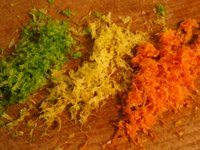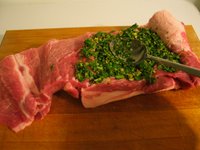I know... I know... I have already posted 2
different entries for this edition of
Is My Blog Burning but I'd like add this third one.
It is not that I am very proud of my cooking, frankly this attempted recipe was more of a disaster than a success, but this is where I invested the most time and energy... and not only my time and energy but the time and energy of my partner Fufu. She graciously explored the internet and Chinese cooking forums in search of a recipe for what is considered to be the most difficult Chinese noodle to make. She also translated a few recipes to English and helped me in the kitchen during the final stages of my failing attempt at making lamian (拉面).

Lamian is made of dough, itself made of high protein flour, which can be stretched by hand to a very fine thickness. It is generally served with a flavourful broth but few toppings so that tasters are not distracted by the delicate elasticity and taste of the noodle. The Japanese ramen noodles, whose name is written with the same chinese characters, is said to originate from the Chinese lamian but contemporary ramen noodles certainly differ from their Chinese counterpart.

There are many lamian recipes but in all cases the dough is kneaded many times at a fairly warm room temperature. Oil is added to make them less sticky and, after resting for a while, they are stretched by hand to the desired thickness. Many recipes call for weird ingredients unknown even to Fufu herself but I still gave a shot at one of the simplest recipes she handed me.
I was able to obtain a fairly decent dough with a very good level of elasticity. I tried cooking a little of it in boiling water and its taste was great and so was the texture. It is with a certain level of pride and confidence that I started to stretch the noodles. I had

seen a guy doing it on TV once and thought I could do the same at home. Those of you who have tried to emulate those guys who can juggle pizza dough around their head probably know already what happened next.
At first, the dough stretched fairly well. I was able to increase its length at least tenfold. But after a certain point, shlop! The dough broke down in a few segments and my still fairly thick noodles fell to the floor. I tried again with a few extra balls of dough but failed every time.
Resourceful, I decided to use my pasta machine to flatten and cut the dough. At that point, both Fufu and I were getting quite hungry and pressure to put something on the table was mounting. I was finally able to flatten the dough which, I thought, would help us eat soon but I was wrong. The machine was simply unable to cut these sheets of dough into finer strips: the dough was simply too stretchy.

We then tried many ways to get noodles of an edible size and finally get something in our bowls. The only technique that really worked was to make a long snake by hand and then to pass it through the pasta machine to flatten it. The result was quite good and resembled large parpadelle but this was quite far from what we expected to eat in the first time. The next day, during our Chinese New Year celebration, we talked to a friend of ours who insisted on the necessity to use a particular powder made from a Chinese plant when making lamian dough. I guess we might give it a second try one day if we ever find that specific powder or if someone is willing to teach us… but for now, let’s just call it a failure which we nonetheless transformed into a meal in time for this edition of IMBB.
Tagged with: IMBB # 22 + Noodle

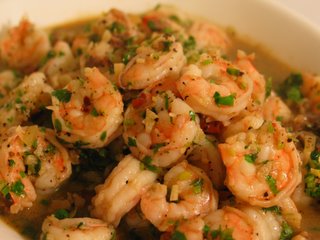

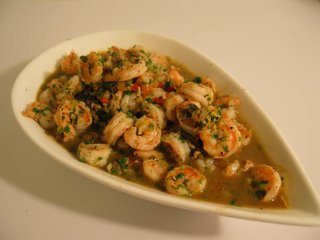












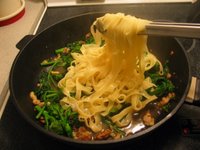



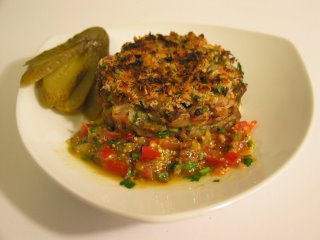











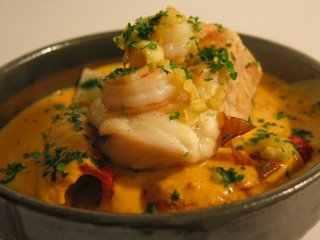
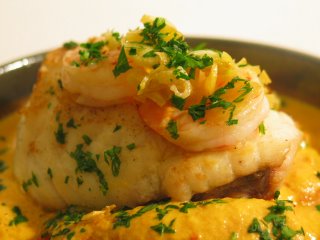









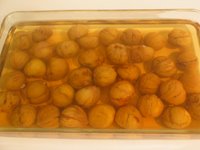


 My mom once gave me her banana bread recipe and since then this is how I use the bananas that get too dark and mushy to be eaten as is. And for years, it has been the only baking I have done. I don’t know where my mom got the recipe in the first place, it might come from a magazine or a book, but the important thing is that it works all the time. Over the years however, I have developed many variations using ingredients that were sitting on my cupboard: coconut and pineapple banana bread, lemon banana bread, chocolate chip banana bread, etc. And last weekend, it is fresh cranberries that I added to my loaf.
My mom once gave me her banana bread recipe and since then this is how I use the bananas that get too dark and mushy to be eaten as is. And for years, it has been the only baking I have done. I don’t know where my mom got the recipe in the first place, it might come from a magazine or a book, but the important thing is that it works all the time. Over the years however, I have developed many variations using ingredients that were sitting on my cupboard: coconut and pineapple banana bread, lemon banana bread, chocolate chip banana bread, etc. And last weekend, it is fresh cranberries that I added to my loaf.


